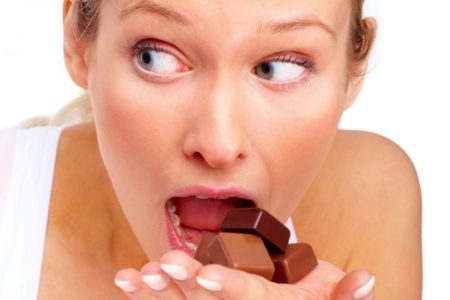Why do we get cravings for certain foods?

Hunger and cravings are two very different things. While one is about survival, the other satisfies the nagging need for something sugary. It’s believed we all develop a taste for sweetness in infancy. This stems from the predominant sweet taste of our mother’s milk; when we taste it, the brain’s reward centres light up, causing us to derive pleasure from this experience. As we continue to consume our mother’s milk this pleasure is reinforced, which could explain how our sugar cravings originate.
Our mothers’ diet can influence our preferences for certain foods. Scientists have found that flavours are transmitted from mother to baby via the amniotic fluid surrounding the foetus in the womb. Once born, the probability of the child disliking the flavours they have already experienced is reduced.
Our gut also plays a large role in cravings. The gut contains an almost separate autonomous system that governs the digestion lining. This vast network of 100 million neurones constantly samples the ingested food, relaying this information to the brain. This endless conversation can cause our appetite and cravings to change. The gut bacteria are also heavily involved; when they break down large quantities of fibre, they produce a specific compound that is sent to the brain, triggering it to feel full and satisfied from the recently ingested meal.
So should we consider cravings as a sign of food addiction? Although high-sugar and high-fat foods exhibit some of the hallmarks of addiction, the consensus is that it’s actually the behaviour around eating these foods that we are addicted to.

The colour and weight of the cutlery you use can change the way your food tastes
Tricking the senses
Does a spoon’s colour change the way yoghurt tastes? In reality it doesn’t, but the colour of cutlery can alter how you think something tastes. A recent study fed a group of volunteers the same yoghurt using a white and a black spoon. The results showed that the yoghurt was perceived to taste sweeter on the white spoon. Altering the spoon’s weight was then tested. The lighter spoons caused the participants to feel the yoghurt was denser and more luxurious. Scientists are unsure what mechanism causes these bizarre results, and want to carry out further research into why we make these associations.
Can the latest technology stop our cravings?
There’s a microchip that aims to control cravings, developed by Kings College London’s Centre for Bio-Inspired Technology. Once implanted in the body, the chip will use electrodes to monitor the signals passing between the gut and the brain. By ‘listening’ to the communication between the two organs, the microchip will be able to recognise signals for cravings and alter these before they reach the brain.
Ghrelin is the body’s hunger-inducing hormone. By using a ghrelin antagonist, scientists aim to suppress this hormone’s activity, stopping cravings from ever materialising. This research has implications for the cravings of other substances too. Scientists have hypothesised that due to the similarities between this system and the system responsible for craving nicotine and alcohol, it may be possible to switch off these cravings as well as those related to food.
For more science and technology articles, pick up the latest copy of How It Works from all good retailers or from our website now. If you have a tablet or smartphone, you can also download the digital version onto your iOS or Android device. To make sure you never miss an issue of How It Works magazine, subscribe today!
Plus, make sure you also check out our digital-only specials, such as Amazing Inventions, Explore Mars and A Guide To The Galaxy, available to download onto your digital device now!





